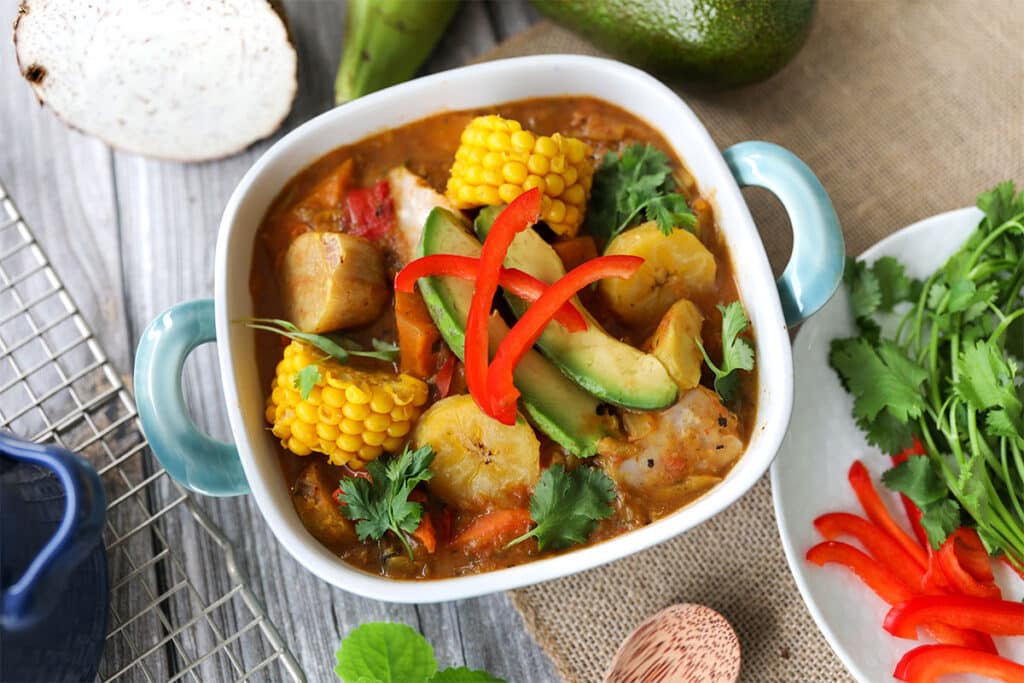

Each country emphasizes certain ingredients or incorporates different ones. Traditionally, sancocho is prepared with meat, but the star of this dish is usually root vegetables and tubers, such as taro, yucca, yautía, and sweet potato. Plantains and calabaza are also commonly added.
Copyright 2025 Center for Nutrition Studies. All rights reserved.